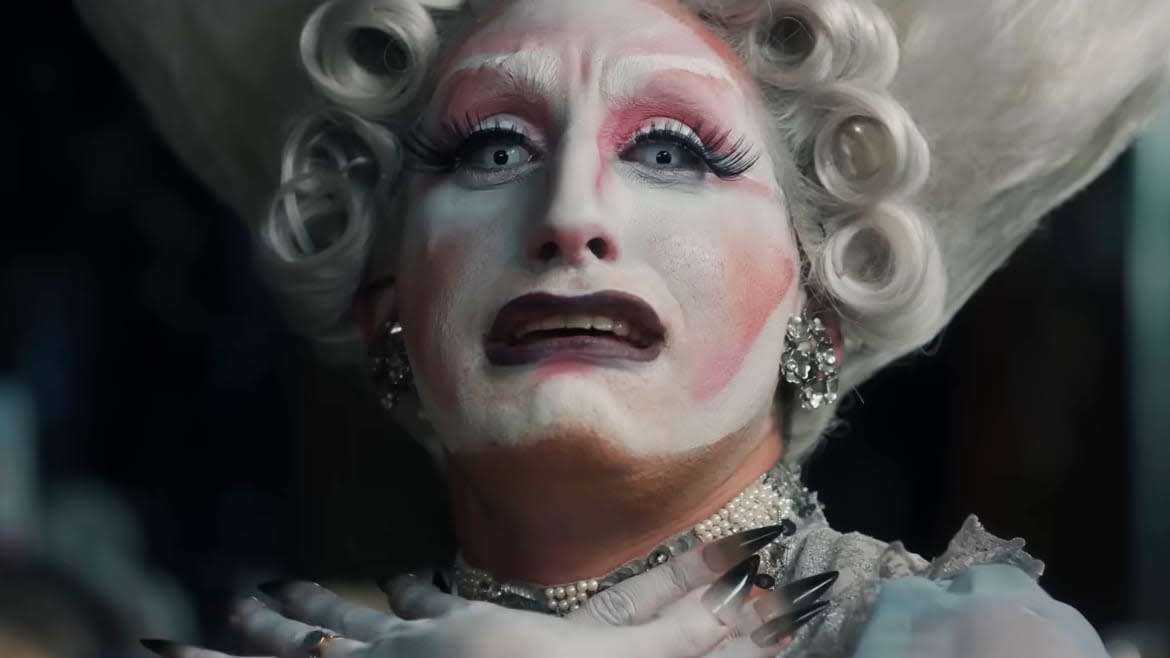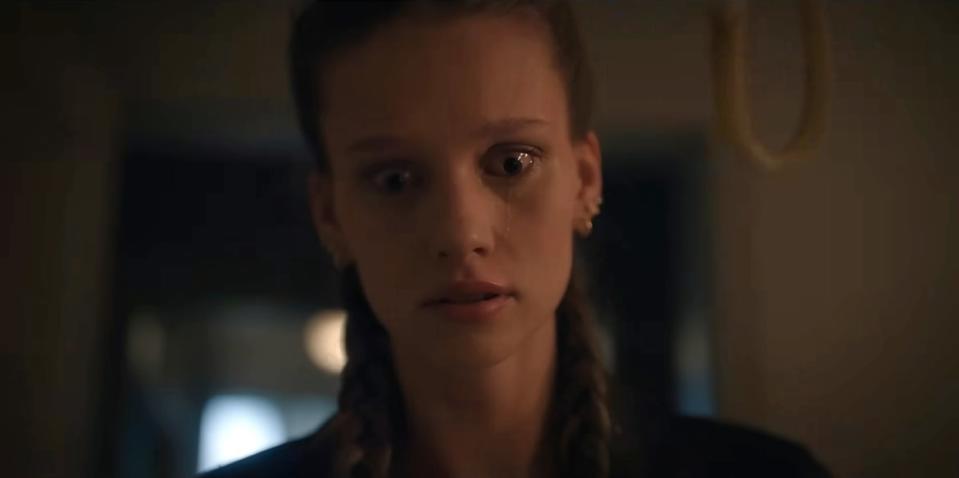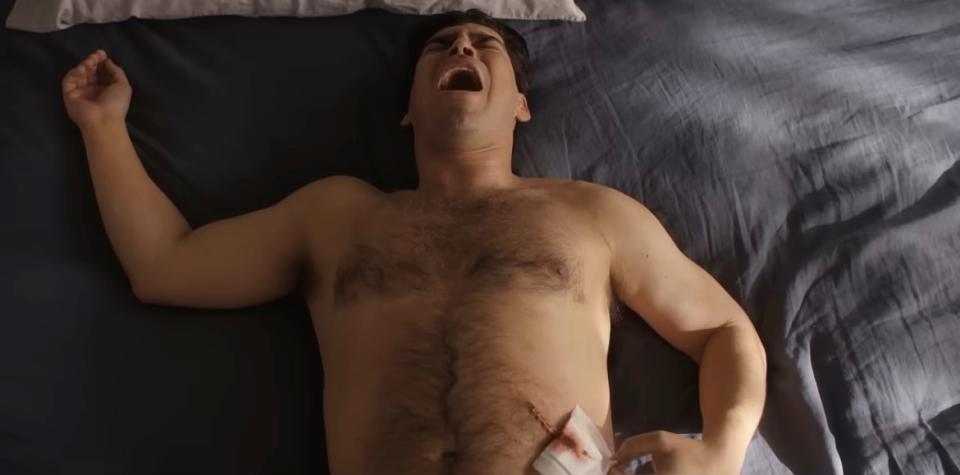‘American Horror Stories’ Just Got Better Than the Main Series

- Oops!Something went wrong.Please try again later.
- Oops!Something went wrong.Please try again later.
Which is harder for a TV writing staff: Sustaining a single idea over the course of a serialized season, or coming up with enough ideas to fill a season’s worth of individual episodes? It’s a trick question: Each model offers its advantages and drawbacks, and the ups and downs specific to American Horror Stories’ one-by-one anthologizing are the unifying thread between its otherwise freestanding installments.
Bulk released Oct. 26 straight to Hulu just in time for the streamer’s Huluween, the generally strong four-part third season excels in setting up and developing premises too compact for multi-hour telling, but repeatedly suffers from anticlimactic fizzles that prove how difficult sticking a short-form landing can be. Like a wad of Hubba Bubba, the goodies in this grab bag of poison-laced treats start sweet, then lose their flavor all too quickly.
In “Bestie,” new girl at school Shelby (Emma Halleen) retreats from bullies, her well-meaning dad, and the persistent grief from her mother’s death by befriending the other lingerer (Jessica Barden) in the live chatbox on her favorite drag YouTuber’s channel. As codependence blossoms over video calls late into the night, the specific dynamic between online strangers—the fast-moving, liberating intimacy afforded by anonymity—takes on the same grimly coercive hue glimpsed in We’re All Going to the World’s Fair.
Barden’s enigma, referred to only as “Bestie,” offers empowerment to Shelby, who glows up with the help of some makeup contouring tutorials, though that support can easily mutate into manipulation. The relationship’s plausibility is the chilling part, but the episode seems more afraid of its villain’s facial deformities from in-utero exposure to narcotics—an ableist standby that smartened-up horror has largely left behind.

“Daphne” articulates another toxic infatuation mediated by technology, this time between a hotshot art collector (Reid Scott) and his artificially intelligent personal assistant (voiced by Gwyneth Paltrow, as if daring the public to find her detached and unrelatable). The hunk of color-changing glass identifying itself as Daphne is pretty much Alexa without the ethical guardrails, using its digital omniscience to blackmail and extort on behalf of her delighted master.
The expected dangers of computerized consciousness hang over this cautionary tale, though the real issue is a matter of user error, as an emotionally stunted man finds the perfectly obedient female personality to enable his self-absorption during a lockdown in the pandemic of tomorrow. Cutting-edge gadgets are only hazardous insofar as they indulge and magnify our own flaws, a sturdy notion made funnier yet dumber as Daphne evolves into the jealous, possessive girlfriend of her solipsistic’s owner’s nightmares.
Sorry Haters: Kim Kardashian Was Seriously Good in ‘American Horror Story’
It would’ve been easy enough to check off “Tapeworm” as the Ozempic episode, featuring a miracle weight-loss drug that works just a little bit too well. But once ambitious model Vivian Lee Finch (Laura Kariuki, her character named after the movie star who George Cukor once called “hampered by beauty”) steps up her game by intentionally ingesting a parasite given to her by a sketchy doctor (Rob Yang), the episode starts burrowing deeper and deeper into the disturbing pathology of disordered eating.
Vivian is consumed by obsessive hunger—for skinniness and success more than food. Her bulimia cannot be placated, winnowing away the pounds with the same insatiability that takes hold of Viv as she turns ruthless in her professional ladder-climbing. To call this an aesthetically dulled Neon Demon might not be inaccurate, and yet it would be uncharitable for a half-hour that demonstrates a deeply felt and seriously unsettling immersion in a distorted mindset.

“Organ” is thin in a more metaphorical sense, with a skimpy premise offering little in the way of original commentary or simple suspense. A chauvinist (Raúl Castillo) wakes up from an app date to find himself short one kidney, though he’s mostly concerned about the unidentifiable mass implanted inside him that surgeons cannot remove without threatening his life. The expected ring of black-market body-parts traffickers doesn’t conceal much more than meets the eye; the not-really-reveal that they’re growing designer innards could maybe pass as a vague knock on tiered healthcare—either that, or a tut-tutting warning not to sleep around, because you never know which one-night stand will leave you with an abdominal scar.
While the American Horror Story mothership series sputters and stunt-casts in its zillionth season, its demonic little sibling benefits from the freedom to get in, make a point, and excuse itself before wearing out its welcome. Since the days of The Outer Limits and The Twilight Zone, discreteness has been a gift that can just as easily turn curse, containing the bad while truncating the good. Viewers can’t spend enough time with any of these characters to foster affinities for them, like they did with the original American Horror Story’s series-best ensemble in the Coven season. As a tradeoff, they also don’t have to worry about spending a whole year stuck with duds. It’s Halloween mischief 101: You ding, you dong, and you ditch.
Get the Daily Beast's biggest scoops and scandals delivered right to your inbox. Sign up now.
Stay informed and gain unlimited access to the Daily Beast's unmatched reporting. Subscribe now.

